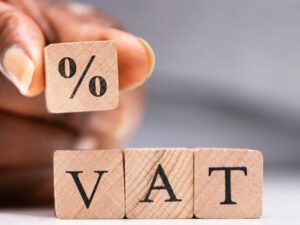I guess the cat’s out the bag now – yes, a couple years ago I designed a child with my penis and I am a father. Anyone who is or has seen a father operate, will be aware of the juggling required on a daily basis. And so goes the story of how I lost my laptop and came back from a potentially disastrous setback.
So we were busy with our annual stay at the Mount Nelson and I was tasked with taking the little one to playschool – just up the road in Higgovale. I was going to nip in to the office at Cartel House later that morning, so I had my MacBook with me. I put it on the roof of the new MINI Countryman as I strapped in my little science experiment (child). You can probably work out what happened next.
As per the Mount Nelson CCTV footage, the MacBook was still on the roof of the MINI as I drove onto Kloof Street. I only realised what I had done when I arrived at playschool, and by that stage the MacBook was gone.
I raced back down Kloof Street and couldn’t find it. I stopped to ask various people and shops and … nothing.
That was the moment of reckoning. How well had I backed everything up? How safe were all my passwords and my data? How much stuff was in the “cloud”?
1) FINDING THE THING
The first thing I tried to do was locate my MacBook using the ‘Find my MacBook’ service. This doesn’t work if you’re not online, so that didn’t happen. What I did do – thanks to iCloud – was instructed the system to wipe my MacBook the moment it does go online. I was also able to type out a message on the screen that would display when (if) the machine goes online.
Whether or not the machine went online after whoever found it, found it, I realised that there were no contact details on the machine. There are still some good people in the world and if they find your machine, what do they do next? My new MacBook Pro (this bad boy) now has my name and cell number written in permanent marker underneath. VERDICT: FAIL.
2) DATA AND SENSITIVE INFORMATION
In terms of information stored on my MacBook, everything is either on iCloud or Dropbox. Backups of websites, important documents, scans, photographs, proposals, spreadsheets etc. – everything was safe. I even keep every screenshot I make in the cloud – find out how to do that here.
Now while there is also a copy of these various documents on the actual machine, the important ones are also individually password protected (Word and Excel have password protection – just click on the file menu to set it up) – so there’s no chance of sensitive info being accessed. That includes a Word doc. file I have which holds all my logins and passwords for websites, banks etc. The only issue is I can’t recall if that file was open when I ‘lost’ my Macbook. VERDICT: PASS. BUT WHAT IF THAT PASSWORDS DOC WAS OPEN? KEEP READING…
3) EMAIL, WEBSITE LOGINS AND WEB BOOKMARKS
My email accounts are hosted at RSAWEB and the offline email backup on their servers is big enough for me to retrieve everything. I would be able to get my email logins from RSAWEB, but luckily iCloud stores all of those in my keychain – that’s a fancy word they use for all the email and website logins I use. And while those are duplicated in the special passwords document I mentioned above, iCloud pre-populates all that info onto your new machine automatically for you. Along with all your website bookmarks. VERDICT: PASS.
4) BANKS
My login details for my bank were stored in my browser so I didn’t have to type them out every time I accessed my bank account online. I quickly logged in to my accounts and changed my passwords. VERDICT: PASS.
5) INVOICES / ACCOUNTING
You don’t still store your invoices as a Word / Excel doc on your machine, do you? You need to get that shit into the cloud. I used to use Freshbooks for all my accounting, and have now moved on to Xero. They’re both in the cloud, so decide which one works for you. I’d go Freshbooks for very small one-woman-shows, or Xero for when you’re struggling to track all the ins and outs to your account. Xero stores your bank login details and keeps a live record of your bank statement, letting you match entries with invoices. VERDICT: PASS.
6) SOFTWARE
Besides the usual Slack, Twitter, Evernote, WhatsApp (you have the desktop version, right?) and the gang, the only real ‘heavy’ licensed software I really use is Word, Excel and Photoshop. For all of those I subscribe to the monthly pay versions. Office365 (Microsoft) and Creative Cloud (Adobe) let you seamlessly log on and download a fresh copy – so that was pretty painless. VERDICT: PASS.
7) THE BIGGEST ISSUE
Now back to that Word doc that stores all my passwords (point two above) – the one that may or may not have been open when I mislaid my laptop. The biggest failure on my part was I setup my MacBook to only ask for a login password every time the machine is completely shut down, rather than every time the computer goes to sleep. The reason I did this is I found it a hassle to type in my password every time my MacBook fell asleep (set to five minutes to save battery power). The result is I may have exposed my entire life, via that Word document that may have been open at the time.
Luckily my new machine comes with a Touchbar and fingerprint reader, so I’ve set my MacBook to fall asleep after five minutes and it requires a fingerprint to log in again.
Much easier than typing out a fancy password with ‘special characters’ etc. VERDICT: THE NEW TOUCHBAR IS CLEARLY A GAME CHANGER.
And so ends the story of Seth’s laptop saga. Good luck out there, kids – hopefully if you follow these tips you’ll be a better person inside and out.









